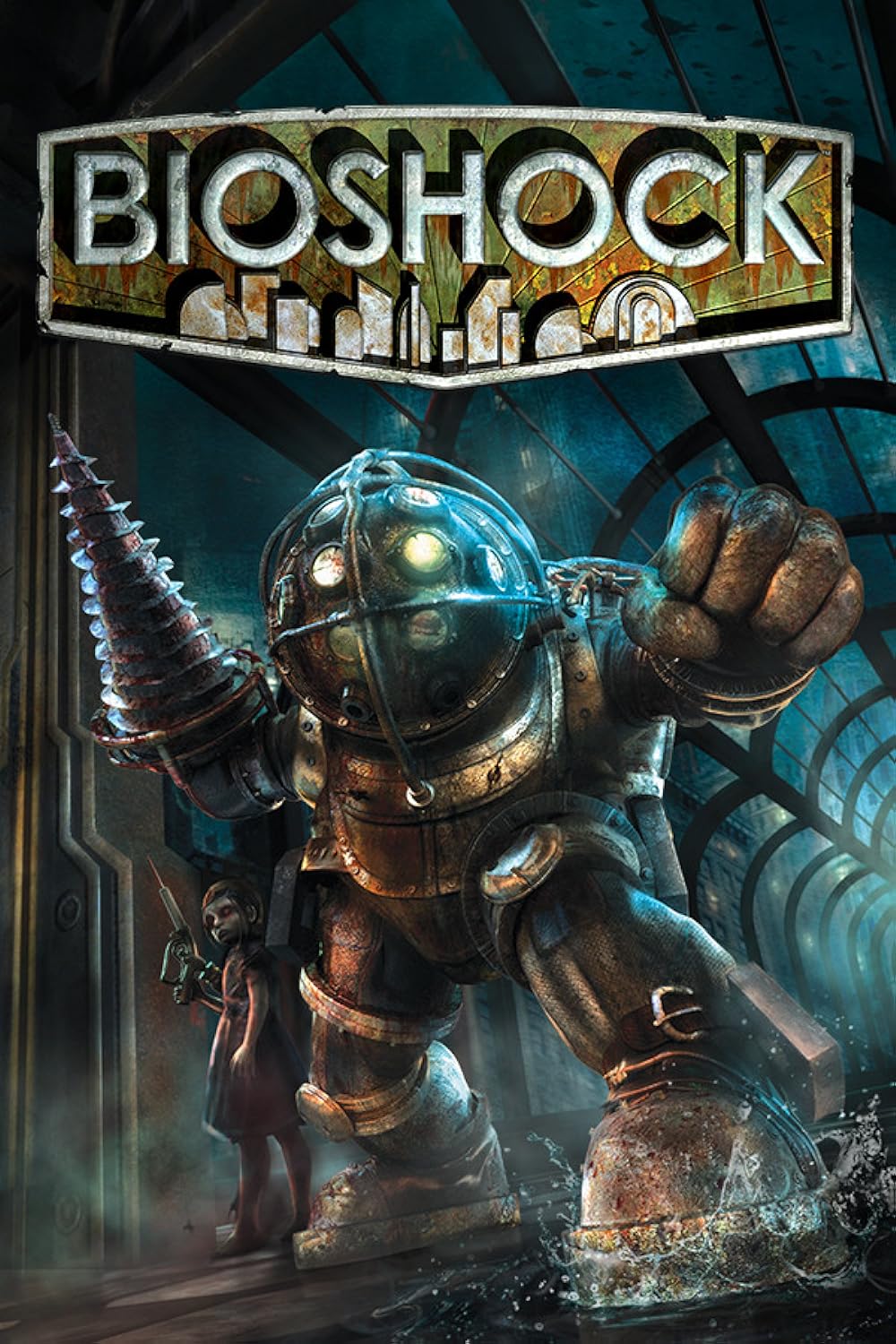Key Highlights
- BioShock series receives critical acclaim for its immersive storytelling and innovative gameplay mechanics.
- Developed by Irrational Games and later by Cloud Chamber, the series has left a lasting impact on the gaming industry.
- The games offer a unique blend of dystopian settings, compelling characters, and thought-provoking themes.
- With its narrative and atmospheric world-building, BioShock has become a must-play for any video game enthusiast.
- The series continues to evolve, with new games and editions adding to the rich lore and legacy of BioShock.
- BioShock’s influence extends beyond gaming, with potential film adaptations and its place in pop culture.
Introduction
BioShock is a critically acclaimed video game series that has captivated players with its immersive storytelling, atmospheric settings, and innovative gameplay mechanics. Developed by Irrational Games and later by Cloud Chamber, BioShock has become a staple in the gaming industry, known for its thought-provoking themes and unforgettable characters.
The series consists of three main games: BioShock (2007), BioShock 2 (2010), and BioShock Infinite (2013). These games take place in various dystopian settings, with the first game set in the underwater city of Rapture in the 1960s. Players take on the role of Jack, a survivor of a plane crash who finds himself in this once utopian society turned into a chaotic nightmare. As Jack navigates the decaying city, he encounters a cast of intriguing characters, including the enigmatic Andrew Ryan, the visionary behind Rapture.
In BioShock 2, players take on the role of Subject Delta, a Big Daddy, as they explore the underwater city once again. The game delves deeper into the history of Rapture and introduces the concept of Little Sisters and Big Daddies, adding a unique dynamic to the gameplay.
The third installment, BioShock Infinite, takes players to the floating city of Columbia, set in an alternate version of 1912. Players assume the role of Booker DeWitt, a disgraced former Pinkerton agent, as he embarks on a mission to rescue Elizabeth, a mysterious young woman with supernatural powers. The game explores themes of American exceptionalism, racism, and religious extremism, drawing inspiration from its predecessors BioShock and System Shock 2. As Columbia seceded from the United States and relocated above the clouds, its whereabouts were unknown to the rest of the world, making it a unique and intriguing setting for players to explore. The game also features downloadable content, including a single-player expansion, BioShock Infinite: Burial at Sea, and a multiplayer mode, BioShock Infinite: Battle Royale, adding even more depth to the already immersive world of BioShock. In December 2019, the publisher announced that a new BioShock game was in development by Cloud Chamber, adding to the excitement and anticipation for fans of the series. With the release of BioShock Infinite: The Complete Edition on October 16, 2014 for platforms such as Microsoft Windows, PlayStation 4, Xbox One, and Nintendo Switch, players can fully immerse themselves in the captivating world of BioShock in October. Gore Verbinski was originally set to direct a film adaptation of BioShock, but the project was put on hold due to budget concerns. However, in May 2008, a deal was announced between Take-Two Interactive and Universal Studios to produce a Netflix film adaptation of BioShock, with Verbinski as the director and John Logan as the writer. As of June 2022, it was announced that Michael Green would be writing the film adaptation, adding even more excitement and anticipation for fans of the franchise. Max excitement and anticipation for fans of the franchise.
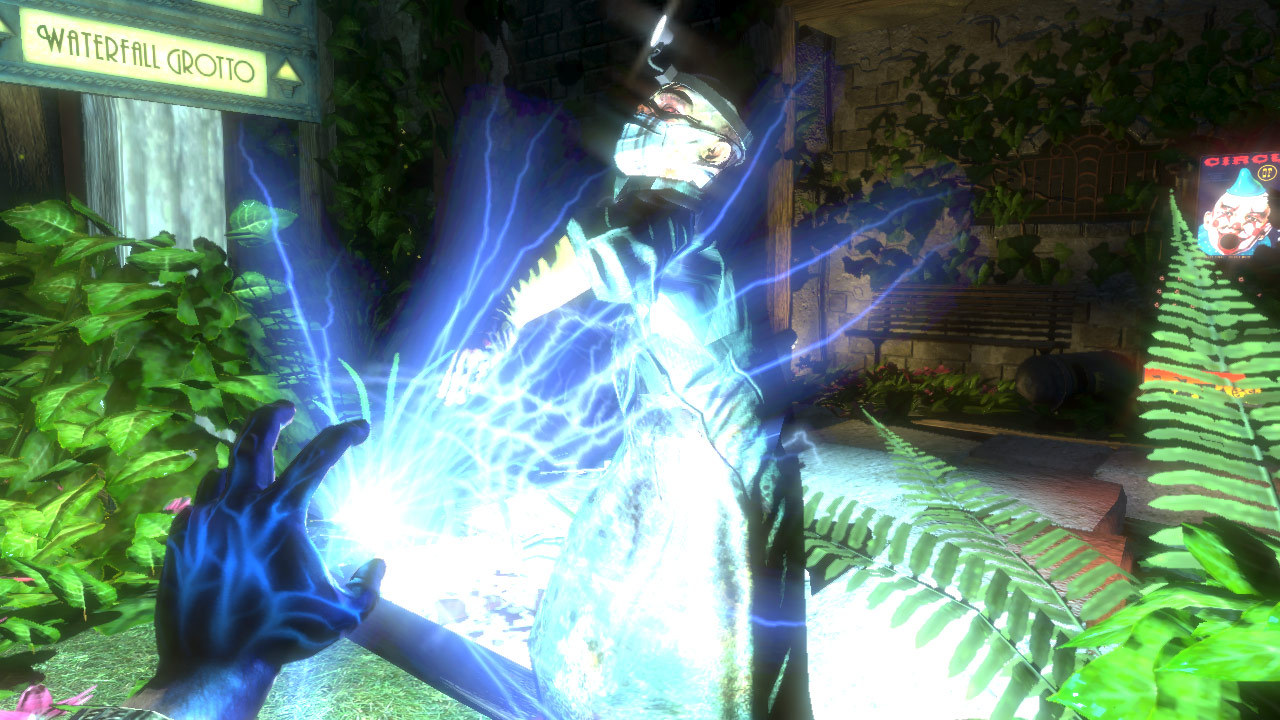
Exploring the World of Rapture
The underwater city of Rapture serves as the backdrop for the first two games in the BioShock series. Designed as a utopia free from the restraints of government and religion, Rapture showcases stunning architectural marvels and a unique art deco aesthetic. As players navigate the crumbling city, they are immersed in a world filled with decay, chaos, and genetic experimentation on multiple gaming platforms including Xbox 360, PC, and PlayStation 3. With its groundbreaking gameplay and immersive storytelling, BioShock has become a beloved FPS experience for gamers worldwide.
Rapture’s underwater setting adds to its eerie atmosphere, with the constant threat of flooding and the isolation from the outside world. The city’s once-glorious architecture, now overgrown with algae and decay, serves as a haunting reminder of the grandeur it once possessed.
The Dystopian Utopia: Setting and Atmosphere
Rapture, the setting of the first two BioShock games, is a dystopian utopia that showcases the dark side of human ambition and unchecked power. Designed by the visionary Andrew Ryan, Rapture was meant to be a paradise where individuals could pursue their own goals without interference from governments or religions.
However, as players explore the depths of Rapture, they quickly discover that the city has descended into chaos. The once-thriving society has been ravaged by civil unrest, genetic experimentation, and the corruption caused by a substance called ADAM. The atmosphere of Rapture is haunting and atmospheric, with crumbling buildings, dimly lit corridors, and the constant threat of splicers lurking around every corner.
The juxtaposition of the once-glorious architecture and the decaying state of the city creates a sense of unease and foreboding. The underwater setting adds to the isolation and claustrophobia, as players navigate the depths of Rapture and uncover its dark secrets.
Architectural Marvels Under the Sea
One of the standout features of the BioShock series is its stunning art deco-inspired architecture. Rapture, the underwater city in the first two games, showcases intricate detailing, grand structures, and breathtaking vistas. The art deco style, characterized by geometric shapes, bold colors, and lavish ornamentation, adds to the unique visual identity of Rapture, which is further enhanced in the remastered collection with updated graphics.
From the soaring skyscrapers to the opulent interiors, every corner of Rapture is a testament to the creativity and attention to detail of the game developers. The architectural marvels of Rapture serve not only as a backdrop for the gameplay but also as a reflection of the utopian ideals and the downfall of the city.
Exploring the city’s different districts, players will encounter stunning examples of art deco design, such as the iconic Welcome Center with its grand entrance and the hauntingly beautiful Fort Frolic with its twisted sense of luxury. Each location in Rapture tells a story through its architectural design, further immersing players in the world of the game.

Characters That Define Bioshock
The BioShock series is known for its memorable characters, each playing a significant role in the narrative and shaping the player’s experience. From the enigmatic visionary Andrew Ryan to the protagonist Jack, the characters in BioShock leave a lasting impression.
Andrew Ryan, the founder of Rapture, is a complex character who embodies the ideals of individualism and unregulated capitalism. His vision for Rapture and his pursuit of total freedom set the stage for the dystopian society players encounter in the first game.
Jack, the player character in the first BioShock, is a survivor of a plane crash who finds himself in the underwater city. As players guide Jack through the decaying city, they uncover his mysterious past and the true nature of his connection to Rapture.
The Little Sisters and Big Daddies form a unique dynamic in the BioShock series. The Little Sisters are genetically altered girls who harvest ADAM, a substance that grants superhuman abilities. The Big Daddies serve as their protectors, heavily armored and fearsome enemies for players to contend with. The moral choices surrounding the treatment of the Little Sisters and the encounters with the Big Daddies add depth and complexity to the gameplay experience.
Andrew Ryan: Visionary or Madman?
Andrew Ryan, the founder of Rapture, is a complex and controversial character in the BioShock series. He is portrayed as a visionary who sought to create a utopia free from the constraints of government and religion. Ryan believed in the principles of objectivism, a philosophy that promotes individualism and the pursuit of self-interest.
Throughout the games, players encounter audio logs and other clues that reveal the darker side of Andrew Ryan’s vision. As Rapture descends into chaos, it becomes clear that Ryan’s ideals of unregulated capitalism and individual freedom have led to the city’s downfall.
The portrayal of Andrew Ryan raises questions about the limits of personal freedom and the consequences of unchecked ambition. Is he a visionary who was ultimately corrupted by power, or a madman who doomed Rapture to failure? The ambiguity surrounding Ryan’s character adds depth and intrigue to the narrative of BioShock.
Jack: The Mysterious Protagonist
Jack, the protagonist of the first BioShock game, is a character shrouded in mystery. The player assumes the role of Jack, a survivor of a plane crash who finds himself in the underwater city of Rapture. As Jack navigates the crumbling city, he uncovers his own connection to Rapture and the true nature of his purpose.
Throughout the game, players uncover clues about Jack’s past and his role in the events unfolding in Rapture. Jack’s journey is one of self-discovery as he confronts the horrors of the city and grapples with the moral choices presented to him.
The character of Jack serves as the player’s avatar, allowing them to experience the world of Rapture and make choices that shape the outcome of the game. Jack’s mysterious background and his personal journey add a layer of intrigue and depth to the narrative.
The Little Sisters and Big Daddies: An Unusual Family
One of the defining aspects of the BioShock series is the unique relationship between the Little Sisters and the Big Daddies. The Little Sisters are genetically altered girls who harvest ADAM, a substance that grants superhuman abilities. The Big Daddies serve as their protectors, heavily armored and fearsome enemies for players to contend with.
Throughout the games, players are faced with moral choices involving the Little Sisters. They can choose to harvest them for maximum ADAM gain or rescue them, sacrificing some ADAM but sparing their lives. These choices have consequences that affect the outcome of the game and the player’s experience.
The bond between the Little Sisters and the Big Daddies adds a layer of emotional depth to the gameplay. The Big Daddies are fiercely protective of the Little Sisters, and players must navigate encounters with them while deciding the fate of these unusual families.
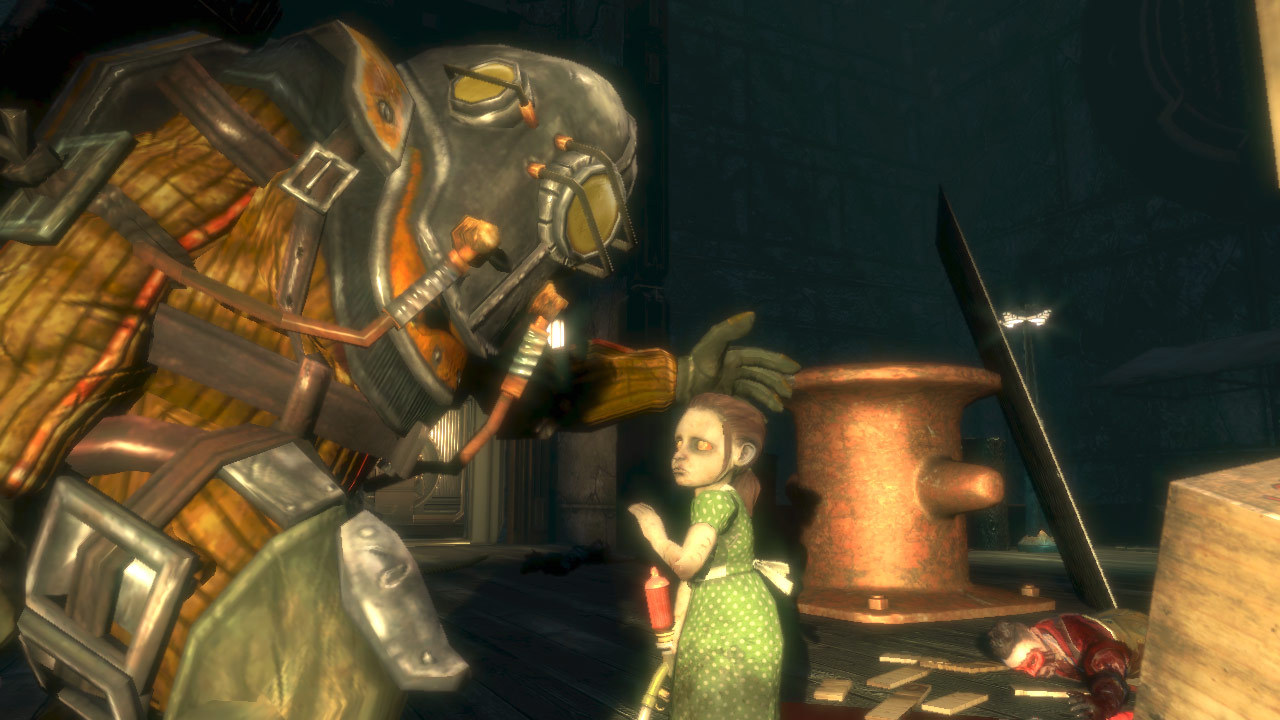
Gameplay Mechanics and Innovations
The BioShock series introduces innovative gameplay mechanics that set it apart from other first-person shooters. The games feature a combination of traditional weapons and genetic enhancements known as plasmids and tonics.
Plasmids grant the player superhuman abilities, allowing them to shoot lightning, freeze enemies, or even control their minds. Tonics provide passive effects that enhance the player’s abilities or offer additional benefits.
The customization options in BioShock allow players to tailor their playstyle to their preferences. Upgrades and modifications can be made to both weapons and genetic enhancements, allowing for a personalized approach to combat.
These unique gameplay mechanics and the strategic use of plasmids and tonics add depth and variety to the gameplay experience, encouraging players to experiment and find their preferred playstyle.
Plasmids and Tonics: Rewriting Human Capabilities
One of the standout features of the BioShock series is the use of plasmids and tonics, which grant the player superhuman abilities. Plasmids are genetic modifications that allow the player to shoot fire, electricity, or other elemental powers from their hands. These abilities can be used to attack enemies, manipulate the environment, or solve puzzles. According to a press release from Take-Two Interactive, the use of plasmids and tonics in the game is meant to “rewrite human capabilities” and create a unique gaming experience.
Tonics, on the other hand, provide passive enhancements to the player’s abilities. They can increase damage resistance, improve movement speed, or provide other beneficial effects. The combination of plasmids and tonics allows players to customize their character and playstyle, offering a unique and personal gameplay experience.
The use of plasmids and tonics in the BioShock series redefines what it means to be human in the world of the game. These genetic enhancements grant the player extraordinary abilities, creating a sense of empowerment and superhuman capabilities.
Combat Strategies and Enemy AI
Combat in the BioShock series requires strategic thinking and adaptability. Players must assess their surroundings, choose the right weapons and plasmids for each situation, and outsmart their enemies.
Enemy AI in the BioShock games is designed to challenge the player and create dynamic and unpredictable combat encounters. Enemies will work together, use cover, and employ various tactics to try to defeat the player.
Players are encouraged to experiment with different combat strategies, combining plasmids, weapons, and environmental hazards to gain the upper hand. The games reward creativity and resourcefulness, allowing players to approach combat in their own unique way.
The fast-paced and intense combat sequences in the BioShock series provide a satisfying and engaging gameplay experience, while the challenging enemy AI keeps players on their toes.
Exploring to Survive: Importance of Resource Management
In the BioShock series, resource management plays a crucial role in the player’s survival. Players must scavenge for ammunition, health packs, and other resources while exploring the game world.
Exploration is rewarded in BioShock, as hidden caches and secret areas often contain valuable resources. Players must carefully manage their inventory and make strategic decisions about when to use limited resources.
Resource scarcity adds to the tension and immersion of the gameplay, creating a sense of survival and the need to make smart choices. Conservation and efficient use of resources become paramount to success in combat encounters and navigating the challenging environments of the game.
The emphasis on resource management in BioShock adds depth and realism to the gameplay, requiring players to carefully plan their actions and think critically about their survival.
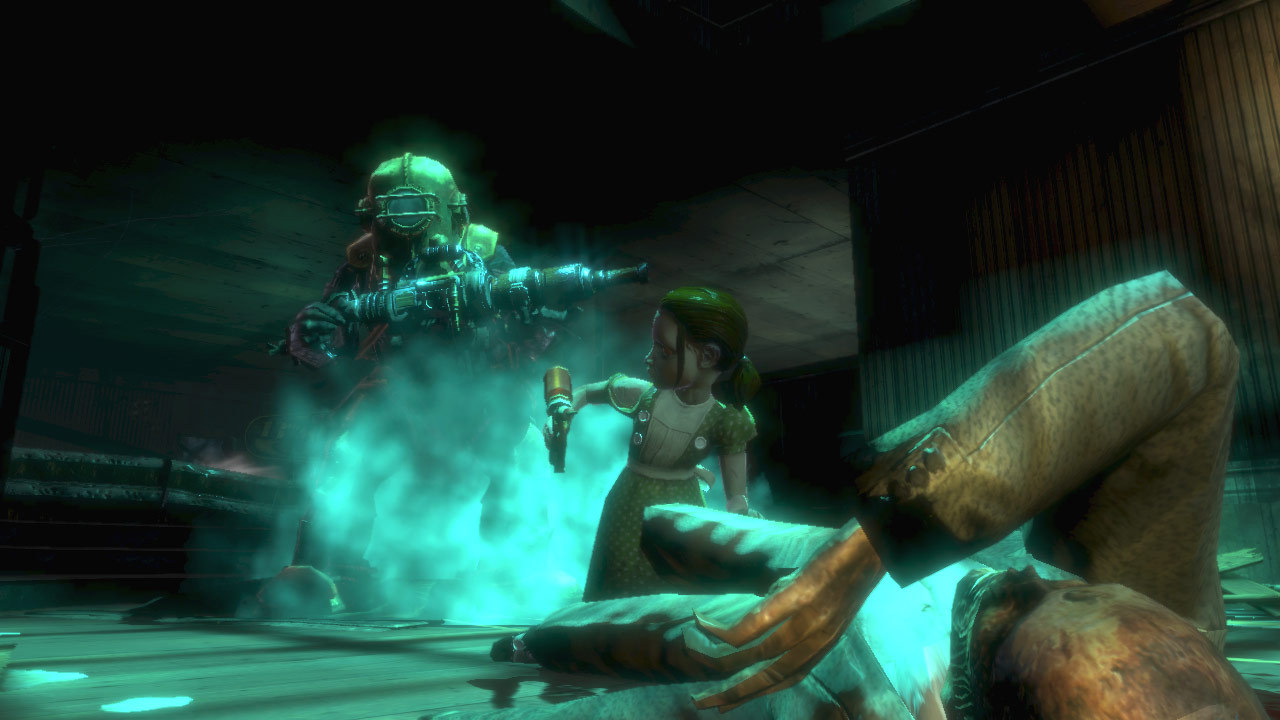
Storytelling and Themes
The BioShock series is renowned for its immersive storytelling and thought-provoking themes. The games explore complex philosophical ideas and tackle social and political issues through their narratives.
The themes of individualism, objectivism, and the consequences of unchecked ambition are central to the BioShock series. The games challenge players to think critically about the choices they make and the ideologies they encounter.
Through compelling characters, rich dialogue, and atmospheric world-building, BioShock creates a narrative experience that goes beyond traditional video game storytelling. The thought-provoking themes and philosophical undertones make the games stand out as works of art.
Objectivism and Free Will: Analyzing the Philosophy
One of the core themes explored in the BioShock series is the philosophy of objectivism. Objectivism, popularized by philosopher Ayn Rand, emphasizes individualism and the pursuit of self-interest.
In the games, the ideals of objectivism are embodied by characters like Andrew Ryan, the founder of Rapture. The consequences of his pursuit of total freedom and unregulated capitalism are explored, raising questions about the limits of personal freedom and the ethics of unbridled ambition.
The BioShock series challenges players to consider their own beliefs about free will and the morality of individualism. The games present a critique of extreme ideologies and invite players to question the consequences of their choices within the context of the game world.
Moral Choices and Their Consequences
One of the defining features of the BioShock series is the moral choices that players must make throughout the games. These choices have lasting consequences that shape the narrative and the outcome of the game.
The moral choices primarily revolve around the treatment of the Little Sisters, genetically altered girls who harvest ADAM. Players can choose to harvest the Little Sisters for maximum ADAM gain or rescue them, sacrificing some ADAM but sparing their lives.
The choices players make affect the ending of the game and the development of their character. They also have an impact on the world of the game, altering the fate of various characters and influencing the overall narrative.
The moral choices in BioShock add depth and complexity to the gameplay, forcing players to confront ethical dilemmas and consider the consequences of their actions.
The Art of Environmental Storytelling
The BioShock series utilizes environmental storytelling to immerse players in its rich narrative. Environmental storytelling refers to the use of the game world itself to convey information and tell a story, without relying heavily on traditional dialogue or cutscenes.
Rapture, the underwater city in the first two games, is a prime example of environmental storytelling. As players explore the decaying city, they uncover audio logs, visual cues, and environmental details that reveal the history and struggles of the inhabitants.
The attention to detail in the design of the game world and the use of atmospheric lighting, sound design, and architecture create a sense of immersion and allow players to piece together the story of Rapture. The environmental storytelling adds depth and richness to the narrative, making the games more than just a series of objectives to complete. The storyline of Bioshock is intricately woven into the environment, allowing players to uncover the dark secrets of Rapture as they explore its hauntingly beautiful landscapes. PC Gamer named Bioshock its Game of the Year for 2007, solidifying its place as a masterpiece in the world of gaming and earning its spot in the Smithsonian Institution’s exhibit dedicated to the art of video games. The soundtrack, included in the special edition of the game, features remixes by Moby and Oscar The Punk, adding an extra layer of immersion and atmosphere to the already captivating gameplay experience. The game’s lead developer, Ken Levine, had previously worked at Looking Glass Studios, and Bioshock’s success can be attributed in part to the influence of the studio’s legacy in creating immersive and atmospheric games. Additionally, the game’s success can also be credited to the contributions of Ben Fritz, one of the key developers at Looking Glass Studios and a writer for Game Informer, who named Bioshock its Game of the Year for 2007.
Visual and Audio Artistry
The BioShock series is renowned for its visual and audio artistry, which enhances the immersive gameplay experience. The games feature stunning visuals, intricate level designs, and attention to detail that bring the game worlds to life.
The visual artistry of the BioShock series is characterized by its unique art deco aesthetic, with its bold colors, geometric shapes, and lavish ornamentation. The attention to detail in the environments, character designs, and visual effects adds to the overall immersion of the games.
The audio design and sound effects in the BioShock series also contribute to the atmospheric and immersive experience. The haunting music, atmospheric sounds, and voice acting bring the characters and world of the game to life, adding depth and emotion to the narrative.
The Role of Art Deco in Rapture’s Identity
Art deco plays a significant role in shaping the visual identity of Rapture, the underwater city in the BioShock series. The art deco style, characterized by its geometric shapes, bold colors, and lavish ornamentation, creates a unique and immersive atmosphere in the game.
The use of art deco in Rapture’s architecture, interior design, and visual elements adds to the city’s grandeur and sense of faded glory. The intricate detailing and iconic motifs of the art deco style reinforce the utopian ideals and opulence of Rapture, while also hinting at the decay and corruption that have befallen the once-great city.
The art deco aesthetic not only enhances the immersive experience of the game but also contributes to the overall storytelling and thematic elements of the BioShock series.
Sound Design: Building Tension and Atmosphere
The sound design in the BioShock series plays a crucial role in building tension and creating a haunting atmosphere. The atmospheric sounds, music, and voice acting contribute to the overall immersion and sense of unease in the game.
The haunting music in the BioShock series sets the tone and enhances the atmosphere of the game. The use of ambient sounds, such as creaking metal, dripping water, and distant voices, adds to the sense of isolation and decay in the underwater city of Rapture.
The voice acting in the games is of exceptional quality, bringing the characters to life and adding depth and emotion to their dialogue. The combination of sound effects, music, and voice acting creates an immersive audio experience that heightens the tension and enhances the overall gameplay experience.
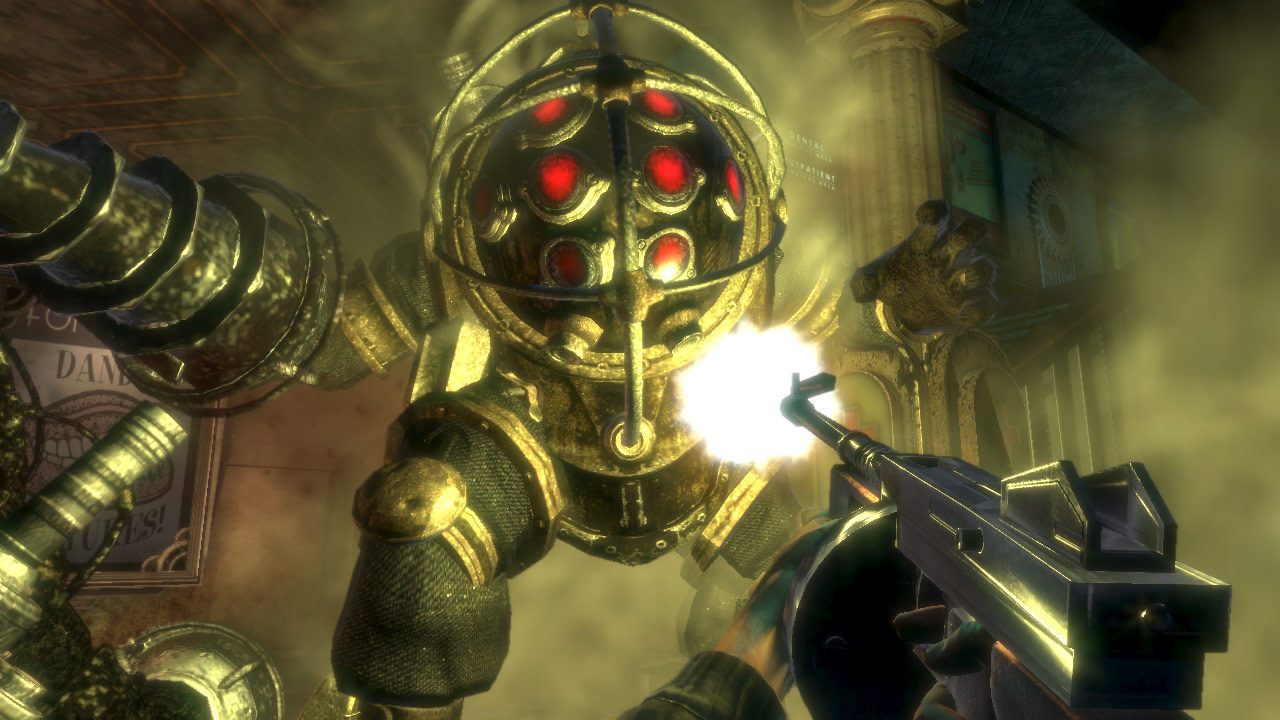
Impact on Gaming and Culture
The BioShock series has had a significant impact on the gaming industry and popular culture. Its innovative gameplay mechanics, immersive storytelling, and thought-provoking themes have made it a landmark series in the world of video games.
BioShock’s legacy can be seen in the countless games that have been influenced by its gameplay mechanics and narrative style. The series has also sparked discussions and analysis among gamers and critics, exploring its themes, philosophy, and storytelling techniques.
The impact of BioShock extends beyond gaming, with the potential for film adaptations and its place in popular culture. The series has left an indelible mark on video game history and continues to be celebrated as a groundbreaking and influential franchise.
Bioshock’s Legacy in Video Game History
BioShock’s legacy in video game history is undeniable. The series has been praised for its immersive storytelling, innovative gameplay mechanics, and thought-provoking themes.
The games have become influential titles that have shaped the direction of the gaming industry. BioShock’s legacy can be seen in the countless games that have been inspired by its atmospheric world-building, moral choices, and narrative depth.
The series has also sparked critical discussions about the role of storytelling in video games and the potential for games to explore complex themes and philosophical ideas.
BioShock’s impact on video game history cannot be overstated. It remains a landmark series that continues to be celebrated and analyzed for its groundbreaking contributions to the medium.
Influences Beyond Gaming
The influence of the BioShock series extends beyond the realm of gaming, reaching into areas such as Hollywood and popular culture. The games have inspired discussions and analysis in various media and have become a touchstone for exploring complex themes and narrative techniques.
There have been discussions and rumors about potential film adaptations of the BioShock series, with its immersive storytelling and atmospheric world offering rich material for cinematic adaptation.
Furthermore, BioShock’s impact can be seen in its influence on popular culture, with references and homages to the series appearing in other forms of media. The games have become a part of the cultural lexicon, recognized and celebrated by gamers and non-gamers alike.
Criticisms and Controversies
Despite its critical acclaim and widespread popularity, the BioShock series has not been without criticisms and controversies. The games’ thought-provoking themes and complex narratives have sparked ethical debates and discussions among players and critics.
One criticism often leveled at the series is the perceived disconnect between its gameplay mechanics and its storytelling. Some players have found the combat-focused gameplay at odds with the deep and thought-provoking narrative, leading to a sense of dissonance.
Controversies have also arisen surrounding the moral choices presented to players, particularly regarding the treatment of the Little Sisters and the consequences of those choices. These debates highlight the series’ ability to provoke thought and engage players on a deeper level.
Debates Over Gameplay Versus Story
One of the ongoing debates surrounding the BioShock series is the prioritization of gameplay versus story. Some players argue that the games’ compelling narratives and thought-provoking themes should take precedence over traditional gameplay mechanics.
Others contend that the gameplay, with its emphasis on combat and resource management, is integral to the overall experience and should not be sacrificed for the sake of storytelling.
The debate over gameplay versus story in the BioShock series highlights the complexity of creating a narrative-driven game. Striking a balance between engaging gameplay and a compelling story is a challenge faced by game developers, and the BioShock series has been at the center of this ongoing discussion.
The Ethics of BioShock’s Science Fiction Elements
The BioShock series delves into science fiction elements that raise ethical questions and explore the boundaries of morality. The games’ narratives and gameplay mechanics present players with choices that force them to confront ethical dilemmas.
The use of genetic enhancements, such as plasmids and tonics, raises questions about the ethics of manipulating human biology for personal gain. The games also explore the consequences of unchecked ambition and the pursuit of power.
BioShock’s science fiction elements provide a platform for players to consider the moral implications of their actions within the game world. The series challenges players’ beliefs and forces them to reflect on the ethical implications of the choices they make.
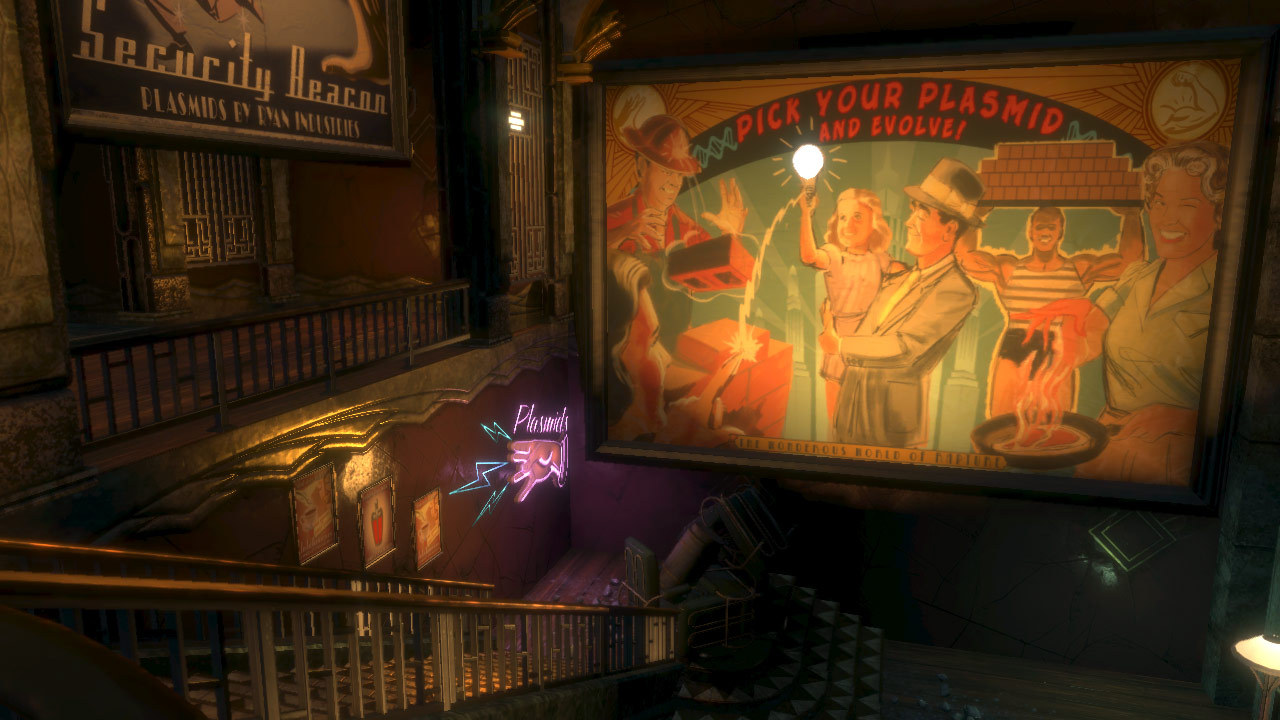
Conclusion
In the depths of Bioshock, a world of dystopian utopia, intriguing characters, and innovative gameplay mechanics awaits. From the visionary Andrew Ryan to the mysterious protagonist Jack, each character adds depth to the narrative. The game’s storytelling delves into themes of objectivism, moral choices, and free will, challenging players to ponder philosophical questions. With its art deco visuals, immersive sound design, and impactful legacy in gaming history, Bioshock continues to captivate audiences beyond the gaming realm. As debates over gameplay versus story and ethical dilemmas persist, Bioshock stands as a testament to the power of storytelling in shaping the gaming landscape.
Frequently Asked Questions
Is Bioshock a Horror Game?
BioShock is not classified as a horror game in the traditional sense. While it does have elements of horror, such as its atmospheric setting and tense moments, the series is more accurately described as a first-person shooter with elements of psychological and atmospheric horror.
